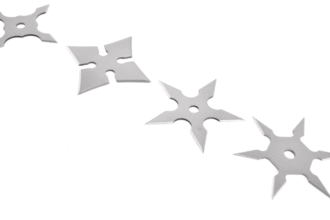Pushups have been a staple of fitness routines for centuries, offering a simple, equipment-free way to build strength and endurance in the upper body. Many people wonder if this classic bodyweight exercise is effective for targeting the biceps, one of the most popular muscle groups to develop. In this comprehensive 1000+ word article, we will delve into the science behind pushups, explore how they engage the biceps, and discuss alternative exercises that can help you achieve your desired bicep development.
Understanding the Biceps
The biceps brachii, or simply the biceps, is a two-headed muscle located on the front of the upper arm. The primary function of the biceps is to flex the elbow and supinate the forearm, or rotate the palm up. In addition to the biceps, there are other muscles in the upper arm, such as the triceps, which are responsible for extending the elbow, and the brachioradialis, which assists in forearm rotation.
The Pushup: Anatomy and Biomechanics
A pushup is a compound exercise, meaning it works multiple muscle groups simultaneously. The primary muscles involved in a pushup are the pectoralis major (chest), triceps brachii (back of the upper arm), and the anterior deltoids (front of the shoulders). Secondary muscles engaged include the core, glutes, and lower back.
During a pushup, the body is raised and lowered by extending and flexing the elbows, with the hands placed shoulder-width apart. This position puts most of the emphasis on the chest, triceps, and shoulder muscles, while the biceps play a more stabilizing role.
Do Pushups Work Biceps?
Although pushups are not a primary bicep exercise, they do engage the biceps to some extent. The biceps work as a stabilizer, helping to control the movement and maintain proper form. However, the biceps are not the main focus of this exercise and will not be significantly stimulated during a standard pushup.
If your primary goal is to build bigger and stronger biceps, incorporating other exercises that specifically target the biceps is essential. However, it is important to note that pushups can still contribute to overall upper body strength and muscle balance.
Alternative Bicep Exercises
While pushups can provide some bicep engagement, it’s crucial to incorporate other exercises that specifically target the biceps if you want to see significant growth. Some of the most effective bicep exercises include:
Bicep curls: This classic exercise can be performed using dumbbells, a barbell, or a cable machine. Bicep curls directly target the biceps and are an essential addition to any arm-focused workout routine.
Hammer curls: Similar to bicep curls, hammer curls are performed with dumbbells but with a neutral grip. This variation targets the biceps as well as the brachioradialis, helping to develop overall arm strength and thickness.
Chin-ups: Chin-ups are a compound bodyweight exercise that primarily targets the biceps, in addition to the back and shoulder muscles. The palms face inward, which places more emphasis on the biceps compared to pull-ups, where the palms face away from the body.
Concentration curls: This isolation exercise places the focus on one arm at a time, allowing you to concentrate on contracting the biceps for maximum muscle activation.
Conclusion
In summary, while pushups do engage the biceps to a certain extent, they are not the most effective exercise for targeting this muscle group. If your primary goal is to build bigger and stronger biceps, it’s essential to incorporate a variety of bicep-specific exercises into your workout routine. These can include bicep curls, hammer curls, chin-ups, and concentration curls, which will help you achieve the desired muscle growth and strength in your upper arms.
However, it is important not to overlook the benefits of pushups in a well-rounded fitness program. Pushups are a fantastic compound exercise that can help develop overall upper body strength, stability, and muscle balance. They target the chest, triceps, and shoulders, while also engaging the core, glutes, and lower back.
By incorporating a combination of pushups and bicep-focused exercises into your workout routine, you will build a strong, balanced, and aesthetically pleasing upper body. Remember to also prioritize proper form, adequate rest, and a balanced diet to fuel your muscles and support their growth and recovery.
The bottom line is that while pushups alone may not be enough to achieve significant bicep development, they are a valuable addition to any fitness regimen. Combining pushups with targeted bicep exercises will help you reach your goals and develop a strong, well-rounded physique.















